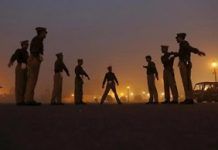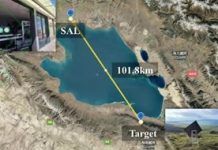The New York Police Department is testing software that uses neighborhood-specific data and past criminal activity to create statistical models that forecast where and when certain crimes are likely to occur. The software, called “Hunchlab,” was developed by a Philadelphia-based company Azavea, and will be used in a pilot project by as many as three police precincts across the city, for a period of two years, an NYPD spokeswoman confirmed.
The software, which is already being used in Philadelphia, New Castle, Del. and Lincoln, Neb., models crime forecasts based on “temporal patterns (time of day, day of week, day of month, seasonality); weather; environmental risk factors (locations of bars, bus stops, etc.); socioeconomic indicators; historic crime levels; and near-repeat patterns to help police departments understand and respond more effectively to crime using the resources available to them,” an NYPD spokeswoman said.
Specifically, the NYPD detailed plans to replace its existing “crime data warehouse” developed with IBM in the early 2000s with its first “data fusion system”—a system that would allow real-time access to internal and external data sources such as sensors, license plate readers, city and state databases and social media. “Predictive policing will allow the NYPD to make better data-driven decisions about deployments,” the document said, pointing to benefits in detecting emerging crime patterns. “The Department has been experimenting with custom-built algorithms that have been shown to be better predictors of crime incidents than traditional hotspot analysis.”
The report estimated the cost of investments for the data center at $10 million, and for the analytics and related Compstat upgrades at $45 million. The idea of “predictive policing” has raised concerns among some advocacy groups concerned that it could infringe on civil liberties. But at a recent panel discussion, Lawrence Byrne, the NYPD’s deputy commissioner of legal affairs, downplayed privacy concerns related to technology and predictive policing and stressed how the interplay of different technologies allows for more effective police work.







